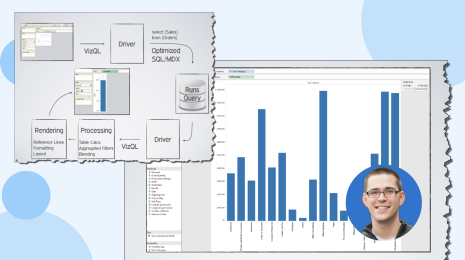Build trust to unlock the potential of smart analytics

This piece was originally published on CIO.com.
Data is a critical fuel in creating better customer experiences, more efficient operations, and opening new revenue streams. The organizations who are best at analyzing data will be the most competitive and impactful. As such, organizations are turning to so-called “smart” analytics technologies—like artificial intelligence, machine learning, natural language interactions, and complex algorithms—to find an edge and further augment analytical abilities, drive organizational change, and catalyze digital transformation in their businesses.
Yet few of these promising technologies have achieved widespread success. Shrouded in mystery and hype, they rarely reach beyond specialized data workers to the rest of us. Due to their underlying complexities, there’s still a primary focus on the technology itself, rather than how regular people will interact with it and benefit.
In addition to making analytics easier to use, we need to focus on the importance of trust. People won’t use smart analytics if they don’t understand and believe in them. Only through trust can we get to the type of mass availability and transformative change that smart analytics can enable. This starts with fundamental trust in the value of data and its surrounding technologies. Then, we can help employees understand how to best use these smart technologies to improve their productivity and insights.
Build agreement on the value of data and insights
Getting people to buy in to a data-driven approach is critical to embracing smart technologies in your organization. People must believe that data is fundamental to the company's value and success, and that organizations who are better equipped to make sense out of their data will do better than those who are not. Where there is resistance to using data to make decisions, there will be barriers to new technologies that aid analysis.
How do you create a culture of analytics? Start by focusing on making data widely available across the organization. Make analytics capabilities available at every level in the organization and reinforce the importance of making every decision data-driven. Reinforce the behavior by bringing data and analytics directly into decision-making meetings and answer questions in real time. Measure how data is used. Understand its impact. And build a community that evangelizes it, including with executive support to reinforce its importance.
Demystify smart analytics
Often times people will avoid what they don’t understand, and they hate to look foolish by not understanding something. We need to help people realize that most of us don’t really have a grasp on smart analytics. It is a relatively new field and we’re all still learning. Education and transparency are key to wider trust.
As algorithms and models become more sophisticated, it’s critical they don’t become incomprehensible. The concept of “explainable AI” is a powerful one—I should be able to understand the operations and logic that were applied to come up with an answer. This helps build my conviction that the answer is right. AI techniques need to expose their inner workings, while at the same time helping us acknowledge and avoid the biases that humans tend to introduce to analytics. This combination will help leverage the best of both worlds—human and machine.
Help people see smart analytics can help them, not replace them
People will not trust something if they believe it endangers their livelihood. In fact, with smart analytics technologies, the opposite is true! People should view smart analytics as a way to help them perform better, instead of a threat to replace them. We collectively need to quell misconceptions like “AI is going to replace my job” and help people understand how machines learn from data—not experiences. Smart analytics can help employees make better decisions to increase efficiency, automate, personalize the customer experience, differentiate versus competitors, and more. How will leaders not love that?
Promote data literacy
Tools and technology are certainly important parts of the greater movement, but employees must also learn to think critically about data. They need to understand when it’s useful and when it’s not. Acting on the wrong data—or wrong recommendations from a “smart” machine—will lead to bad decisions and wasted resources. This is where data literacy, critical thinking, and people development come in.
An impactful data education requires both practical and creative skills. Introducing smart analytics into business processes will require trust in these technologies alongside good judgment from the workforce. Even more experienced data scientists may have hesitations—why, if they have tried and true experience, should they trust a machine? Less experienced users will need to learn how to interact with and validate smart technology recommendations, or to interject human knowledge to correct course.
Can you make the change?
Change is uncomfortable, especially with adopting advanced technologies. But it’s no longer a question whether the organizations that best master their data will be the most successful. The bridge from discomfort to success will come in helping your people build trust in these new capabilities.
It will be exciting to see in the coming years how trust and confidence are addressed as smart analytics improve and evolve. How will people react as machines learn to extract users' domain knowledge? Do your employees understand the role they play, together with the technology, in maximizing the potential of your organization’s data?









